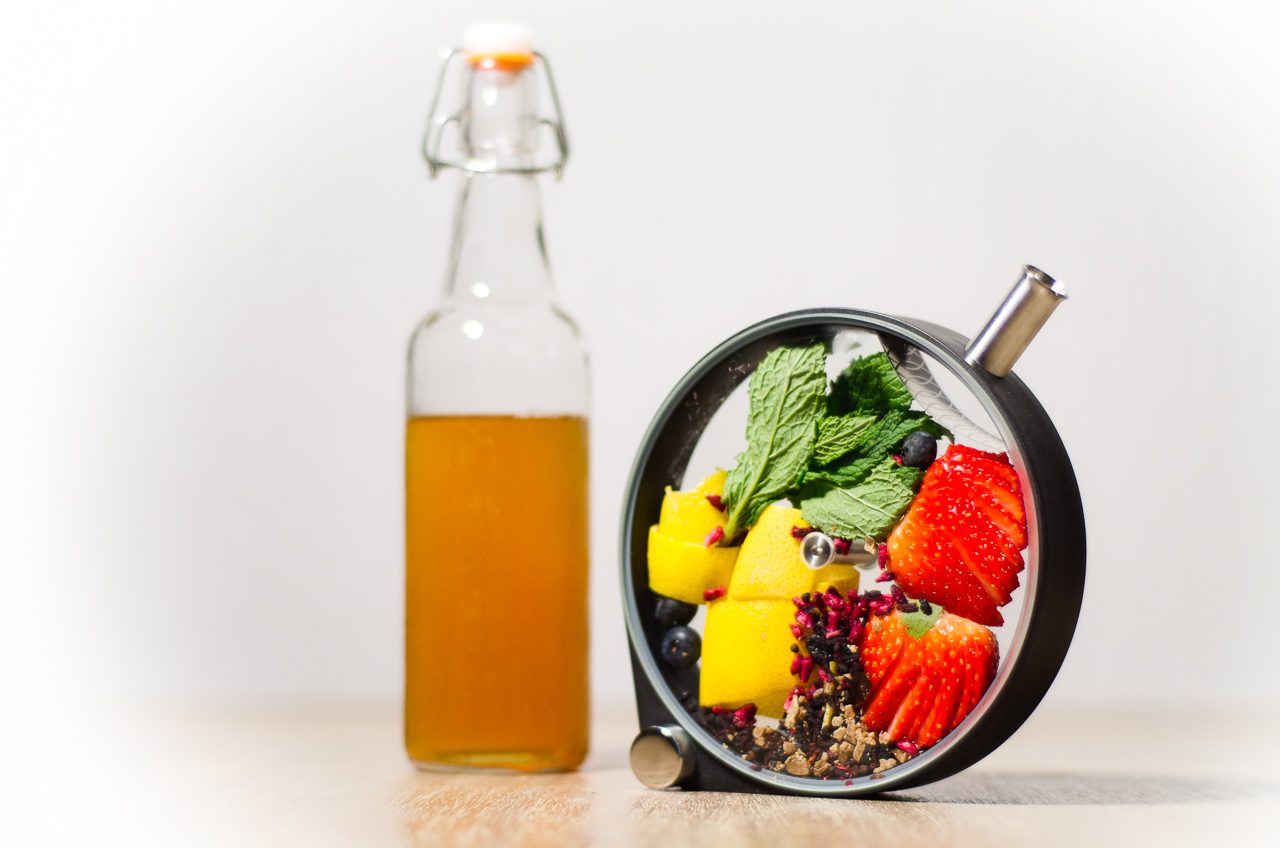The Porthole, designed by Martin Kastner of Crucial Detail design studio, is an infusion vessel, originally designed for the chefs at The Aviary. Back in 2012 they launched a Kickstarter campaign, which raised over $700,000 in just 28 days, and then began offering The Porthole to the public. Apparently, the Porthole has received a lot of attention and has been featured in many magazines. I’d never seen it until I read The Aviary Cocktail Book , but, in my opinion, this vessel has become an iconic representation of the book. It is a curious, visually striking item, and you can’t see it without wondering, “What is that?”
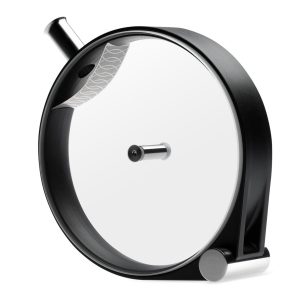
The basic idea is that the front and glass panels are removable. They’re each attached to a central post with little recessed screws, which are removed with a special tool that’s included. I’m not a product designer, but I think it would be easier to use if only one of the panels was removable and the other was fixed in place – I’ll explain why later. There are a few interchangeable screens (strainers) of different apertures that attach inside the device, directly beneath the spout. Since the glass panels can be removed, it’s possible to beautifully arrange the ingredients inside the diffuser (laid flat, on top of one of the panels), which adds significantly to the aesthetic appeal. Once you’ve made everything look beautiful, you attach the top glass panel, then you’re ready for the liquid. You could accomplish the same end result by combining all of the ingredients inside of a bowl or jar or press pot and then straining them before serving. But that wouldn’t be nearly as sexy or stunning as this. Lucky guy that I am, my wife gave me a Porthole as a Christmas gift.
The book features six different Porthole recipes, all of about equal complexity. None of them require specialized equipment (other than The Porthole itself), and most of the ingredients are pretty easy to find. I chose the Blueberry recipe as one of my first ten recipes because I already had the necessary spirits on hand.
The Cocktail Base
The cocktail base is a mixture of Michter’s Rye (which I happen to love), Carpano Antica Formula Sweet Vermouth (which I am also quite a big fan of), Angostura Orange Bitters, simple syrup, water, and an ingredient I had never used before: Fusion Verjus Blanc .
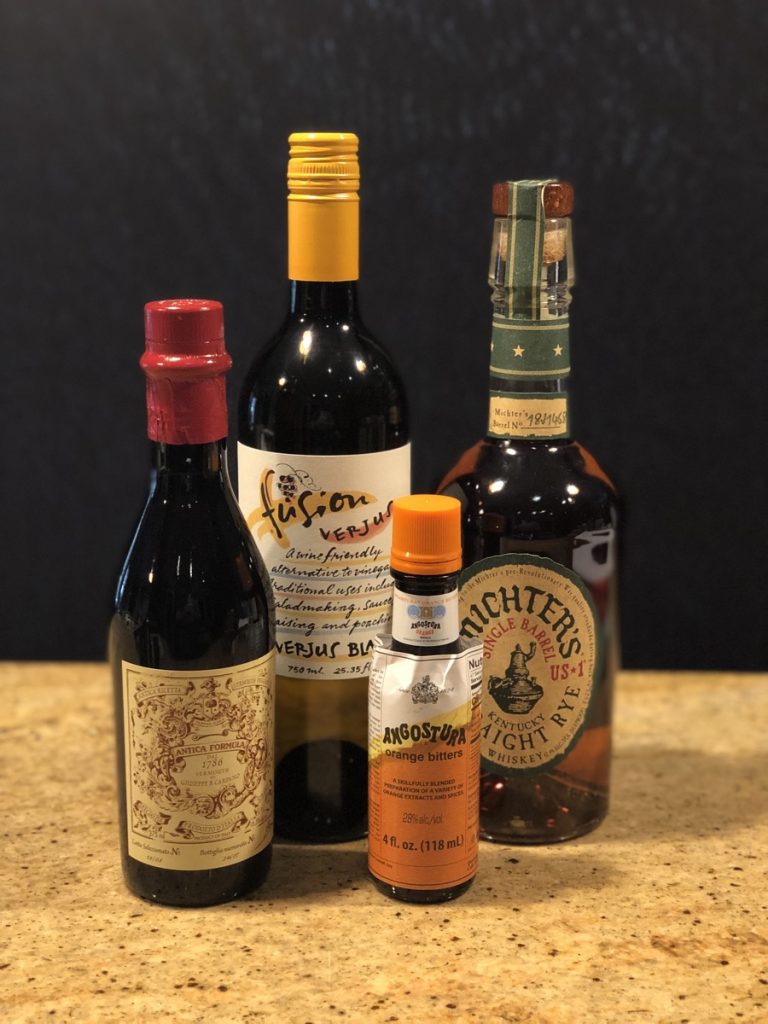
Fusion Verjus Blanc seems to be non-alcoholic wine. It’s the juice of unripe grapes. It’s not fermented. It’s not nearly as acidic or tart as vinegar, and it has the essence of white wine. Seems to be primarily a substitute for cooking wine. I find it to be a surprising addition to a cocktail, but it appears in 13 of The Aviary recipes (in blanc and rouge), so they must like it. I’m not sure why you would use this over wine. My best guess is to keep the alcohol content in check.
I combined the cocktail base ingredients, added the mix to a bottle, and let it chill in the refrigerator for a day. There’s no reason to wait this long – I was just breaking up the prep work.
The Infusion Ingredients
The infusion ingredients include: blueberries, strawberries, mint, lemon peel, grapefruit peel, freeze-dried pomegranate arils , Rare Tea Cellar Berry Meritage tea, and a tonka bean.
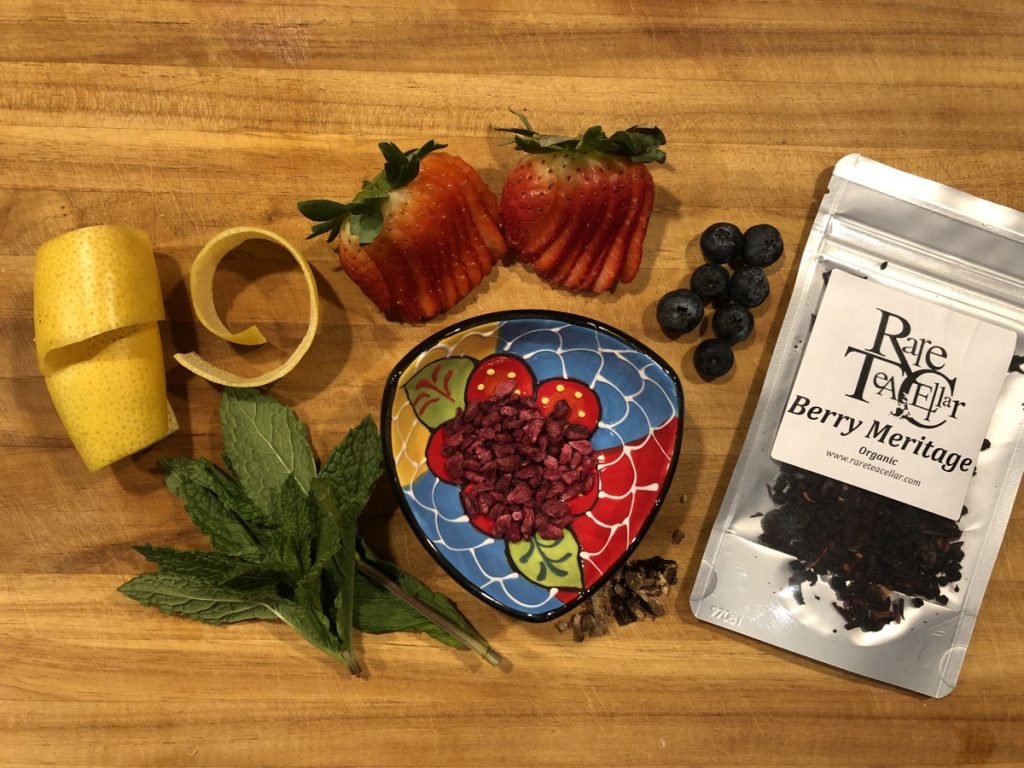
Thankfully, the requisite tea was included in the master tea sampler, which I gave to my wife as a Christmas gift, so I already had that on hand.
This was my first encounter with tonka beans. They’re the seeds of a flowering tree in the pea family, which is native to South America. Surprisingly, selling tonka beans to eat has been illegal in the US since 1954. Tonka beans contain unusually high levels of the chemical coumarin, which gives them their flavor, and coumarin has been found to be toxic. Google it if you want to know more. Nevertheless, tonka beans are for sale on Amazon. Happy day!
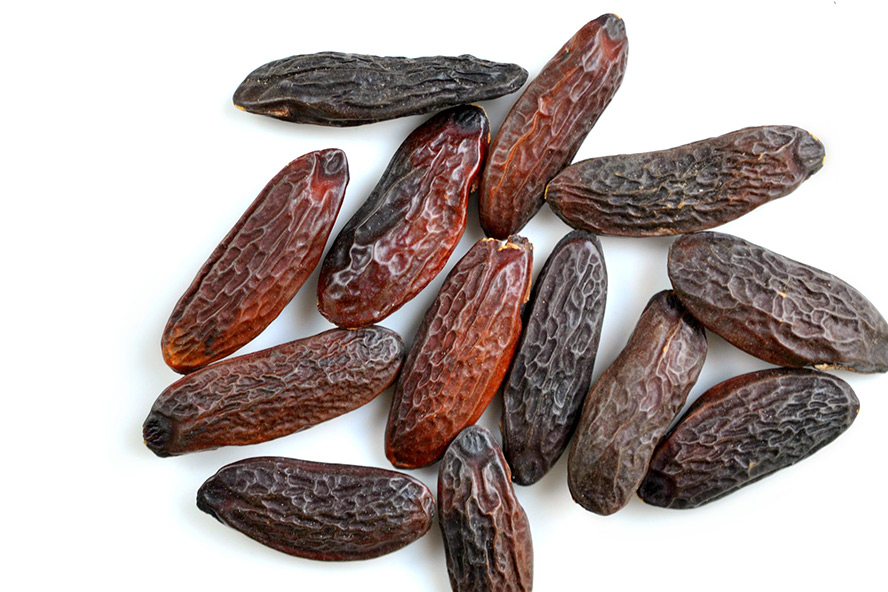
When mine arrived, I ripped open the package and took a greedy whiff. Wow. It was a syrupy, warm, rich amalgam of vanilla, clove, anise, burnt sugar. Pretty much everything delicious. And it smelled familiar, even though I’ve never handled them myself. Turns out they’re a common ingredient in cosmetics, perfumes, and lotions.
Arranging the infusion ingredients was a rather straightforward task. The recipe calls for the lemon and grapefruit peel to have “all pith removed.” I took the extra step of carefully cutting the white pith off of my peels. Since I was tinkering with the peels, I decided to square them up. I’d never done either of these things before, but I like them both. I think the finished product was visually appealing, and the absence of pith will prevent the infusion from becoming bitter. This is important since the fundamental idea is to sample the cocktail over roughly 15-minute intervals to experience how the color and flavor change over time (spoiler alert: the change was dramatic). Since the infusion went on over the course of about an hour, it is possible the white pith would have spoiled the taste.
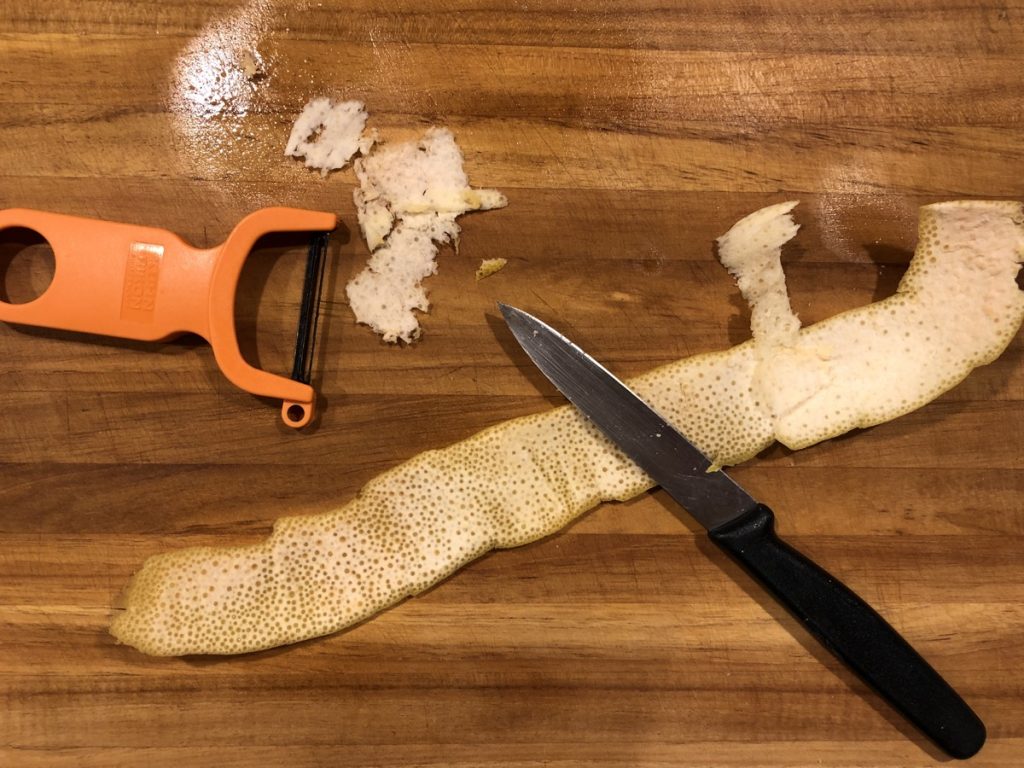
Removing the pith from the peel 
Trimming the edges of the peel
Assembly
Once everything was arranged nicely in the infusion vessel, the only thing left to do was to screw on the front glass panel. Things got a little tricky here. In order to get the screw in I had to lift the vessel off of the surface and put some back pressure on the opposite screw with my fingers. This led to a slight shifting of the bottom glass, which became a minor problem later (details soon), and could become a major problem in some instances. This is why I would prefer it if one of the glass faces was permanently fixed in place. I think I can mitigate this in the future by sliding it partially off of the cutting board, rather than lifting it up, so its own weight pushed against the cutting board will keep everything in place. We’ll see. In any event, I was very pleased with how it looked. I popped it in the fridge to keep it fresh until I was ready to use it later that night. Big mistake.
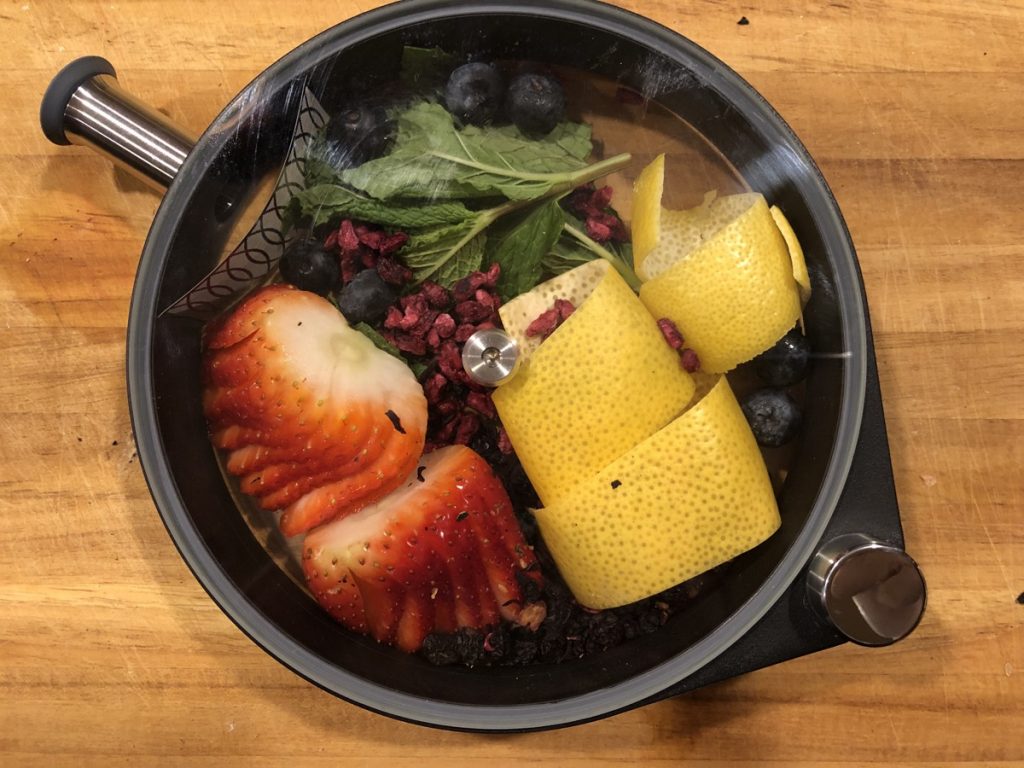
Here’s what happened: Just before tasting time I wanted to snap a few photos of my beautifully arranged Porthole. But since I had placed it in the fridge, it immediately fogged up with condensation. That’s not what I had in mind. So I waited, and waited, and waited. Finally I started taking pictures even as part of the glass was still fogged up. Then I realized that for some reason the back side was not fogged up. Hmm. Up until this point I had only been looking at it from the front. I hadn’t even considered the alternative perspective (there’s a metaphor for you). I quickly did a 180 with The Porthole and started getting nice looking pictures. Later on, when I zoomed in on the photos, I noticed the minor problem. Little bits of tea, and maybe other stuff, had gotten caught in between the glass and the rim of the vessel. This happened when I lifted it to provide back pressure and the glass shifted a bit. It doesn’t look the photos (minor problem). But the major concern is that a piece of stuff caught there could actually break the seal and cause the ingredients to leak out. That would be very sad indeed.
Tasting
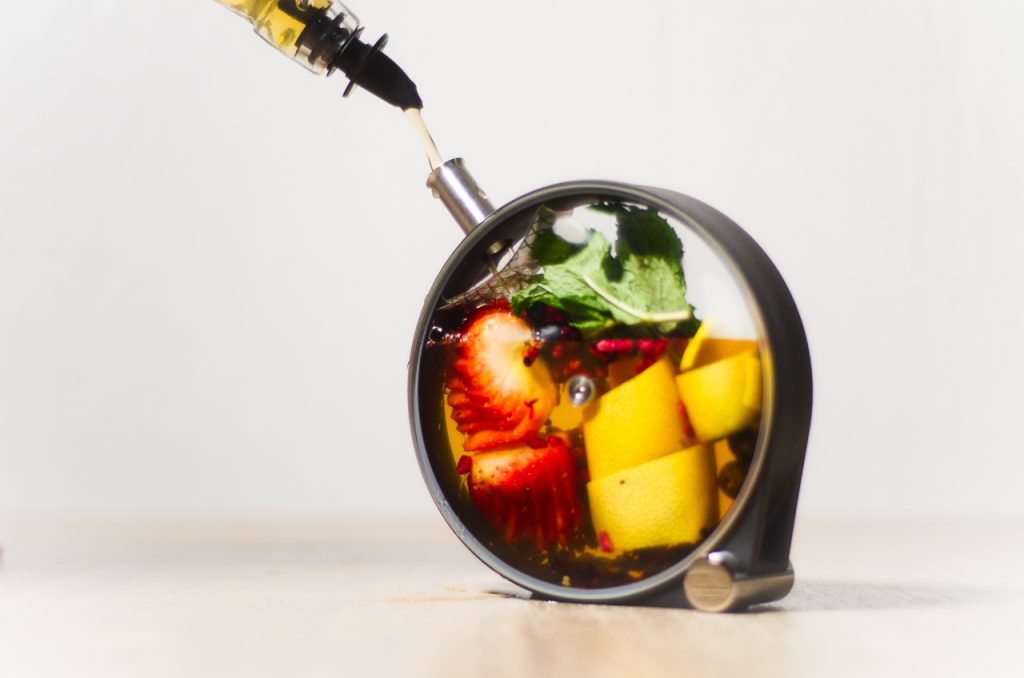
With the pictures complete, it was time to partake. I served this very simply: up in a coupe glass. Initially the color was pretty unchanged, but over time the color turned to a deep rose. In the first sips the tonka bean was the dominant flavor (in addition to the booze), and over time the berry tea and mint started playing a much more dominant role. I’m not sure the fruit ever did much, but it sure looked nice!
Important note: I wondered throughout the process whether one Porthole was large enough to serve two people. The answer, thankfully, is yes. The entire cocktail batch fit perfectly into the one vessel, and there was enough quantity to provide several refills of our coupe glasses. I mention this here because the point was not clearly made in the book.

